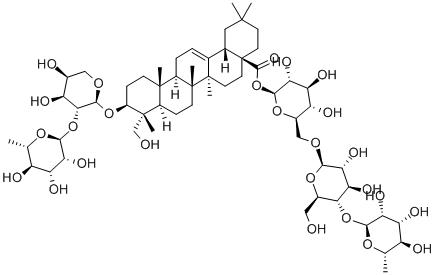Absorption and metabolism of Catechins
-
Last Update: 2020-04-03
-
Source: Internet
-
Author: User
Search more information of high quality chemicals, good prices and reliable suppliers, visit
www.echemi.com
2015-01-29 classification: efficacy effect: 0 person review In the past 30 years, a wide range of studies have been carried out on the physiological functions of the active components (i.e tea polyphenols or catechins) of tea at home and abroad It is revealed that tea polyphenols not only have superior antioxidant properties, but also have the functions of inhibiting gene mutation, anti-tumor or cancer, lowering cholesterol, inhibiting blood pressure rise, anti blood glucose and platelet aggregation, antibacterial, anti-virus and anti caries Teeth, anti ulcer, anti allergy, improvement of intestinal flora and deodorization It is not difficult to find that many physiological functions of tea polyphenols or catechins (such as anticancer, cardiovascular prevention, anti ulcer, etc.) are closely related to their antioxidant effect The bioavailability of catechins in vivo has always been the focus of attention (1) The absorption and metabolism of catechins were studied precisely by Nakagawa et al In 1997, the experiment of catechins intake was quantified After taking 100 mg of EGCG (equivalent to the catechins content in 1-2 cups of green tea) for 1-2 hours, the concentration of free (i.e natural) catechins in the plasma reached 140-230 ng / ml (or 9.3-0) 5 nmol / ml), then decreased gradually, and completely disappeared from the blood after 12 hours The concentration of glutathione (0.3 nmol / ml) and p-carotene (0.4-0.9 nmol / ml) in the plasma is equivalent to that of α - tocopherol and ascorbic acid If we consider the conjugated catechins in vivo, the content of catechins is much higher Its conjugated compounds include sulfuric acid ester type, glucosidic acid type and so on The proportion of catechins in free form, thioester form and glucosidic acid form is about (2-3): (2-3): 1 The absorption rate of catechins in vivo is at least 5 times higher than that of free catechins Some studies have shown that only 0.2% - 2% of catechins are ingested in human plasma after ingestion, so it can be inferred that their absorption rate is 1-10% Recent research results show that catechins are absorbed very low in the stomach or small intestine Catechins are mainly absorbed by the body in the colon, where polyphenols are degraded into smaller molecules by intestinal flora and then absorbed by the body The intestinal flora of different organisms and even different individuals of the same species will also be different, which will lead to great differences in the research results (2) The absorption and metabolism of EGCG, the most important catechins in tea, is the main research object of the absorption and metabolism of tea polyphenols Kida et al, National Food Research Laboratory of Japan, administered EGCG orally to mice and analyzed their metabolites in urine The results showed that EGCG was degraded by enteric stretch bacteria to produce M-1, and EGC, the intermediate, was absorbed, and then m-2 was formed in intestinal mucosa or liver to enter the circulatory system, and finally excreted out of the body Many studies have shown that EGCG is also suitable for other catechins, including (+) 1-l-teachin, (1) epicatechin, (1) epicatechin and so on In addition, kohri et al Also depicted the metabolic pathway of EGCG Part of the oral intake of EGCG was absorbed in the intestine and entered the liver through the portal vein In this process, most of EGCG conjugates in the intestinal mucosa or liver, and some of them are further methylated in the liver Then, most of the metabolites of EGCG are secreted into bile However, some of them (including complete EGCG) enter the blood circulation and reach the peak value 1-2 h after ingestion Although it has been reported that the biological efficiency of EGCG and its conjugates in the blood circulation system is quite low, most of the unabsorbed EGCG enters into the cecum and the large intestine, and is degraded into 5-One (37,5 '- dihydroxyphenyl) pentaerythritone (M-L) by the intestinal flora Most of the formed M-L is absorbed into the body, and glucoside acidification occurs in the intestinal mucosa or liver, forming m-2 substance, which enters the blood circulation, distributes in different tissues, and finally excretes in urine.
This article is an English version of an article which is originally in the Chinese language on echemi.com and is provided for information purposes only.
This website makes no representation or warranty of any kind, either expressed or implied, as to the accuracy, completeness ownership or reliability of
the article or any translations thereof. If you have any concerns or complaints relating to the article, please send an email, providing a detailed
description of the concern or complaint, to
service@echemi.com. A staff member will contact you within 5 working days. Once verified, infringing content
will be removed immediately.







